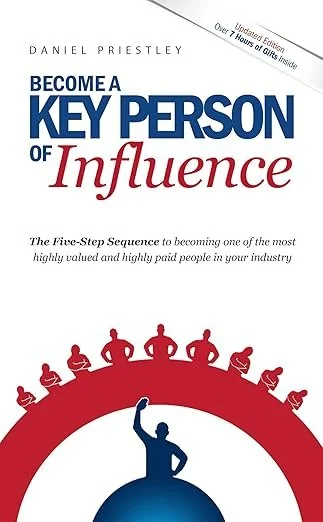By Daniel Priestly
I was recently recommended a book on personal branding, and it struck me that it is just as important as corporate branding, and equaly valuable to those CEO’s who dare to stick their head above the corporate parapit. From Henry Ford to Elon Musk, the history of business shows that investors rarely buy companies in isolation, they also buy into the leaders who personify them.
Ford’s reputation for innovation and efficiency turned “Fordism” into a global symbol of progress in the early 20th century. Charles Rolls and Henry Royce embedded their names into one of the most enduring luxury brands in the world and John D. Rockefeller’s name became synonymous with Standard Oil’s dominance as a source of both investor trust and antitrust scrutiny. Richard Branson’s swashbuckling personal brand has long been inseparable from Virgin (wh was there at the launch of Virgin Bride - look it up, it’s worth it) appealing to investors as much as to customers.
This interplay of personal identity and corporate value has only intensified in recent years. My work with today’s technology and telecommunications companies depend less on tangible assets and more on vision, credibility, and trust. Recent research confirms that in these industries, the CEO’s personal brand is central to corporate valuations.
Studies show that CEO visibility boosts firm reputation and analyst sentiment, but only when leader messaging aligns with the corporate brand and strategy. Visibility without congruence is just noise (at best and a liability at worst). Analysts respond positively when the CEO’s tone and values mirror the company’s narrative; misalignment erodes trust and depresses assessments.*
The contrast between Elon Musk and Satya Nadella illustrates this clearly. Musk, the archetypal “celebrity CEO,” attracts extraordinary attention. His visibility amplifies Tesla’s profile and retail investor enthusiasm, but his off-brand controversies on X (formerly Twitter) inject volatility and undermine long-term confidence.
Nadella, by contrast, embodies Microsoft’s strategic story of empowerment and innovation. His calm, consistent communication reinforces brand congruence, strengthening Microsoft’s reputation and investor trust as the company leads in AI and cloud.
Other leaders underline the same point. Jeff Bezos’ personal brand is relentlessly focused on “Day One” thinking and customer obsession. He was never flamboyant but because he’s seen as Mr Amazon, he’s perfectly aligned with Amazon’s culture which gives investors reassurance. Even after stepping back, Bezos’ credibility continues to halo the company. Jack Ma, once the face of China’s entrepreneurial rise, showed how quickly personal visibility can backfire when it clashes with external stakeholders: his outspoken criticism of regulators in 2020 triggered a crackdown that wiped billions from Alibaba’s value. And Michael O’Leary of Ryanair also represents a contrarian case: his blunt, combative style often alienates consumers, but still it perfectly matches Ryanair’s low-cost, no-frills model. For investors, his personal brand is brutally consistent expression of strategy.
My interpretation of these case studies is that the lesson across past and present is clear, visibility alone is not enough. Charisma without alignment creates volatility. Celebrity without substance invites scrutiny. The CEOs who add value are those whose personal brands are authentically tied to their corporate strategy, tone of voice, and ambition. In tech and telecoms, sectors built on intangibles and narratives, this alignment is tied directly to cororate governance (does any still talk about ESG?).
For CMO’s, personal branding for the exec team shouldnt be regarded as a vanity project, but just like any other PR, as a strategic lever, because executive visibility can help to reinforce investor trust, reduces perceived risk, and amplifies innovation stories. When neglected, or much worse when misaligned, it destabilises value.
Investors buy the storyteller as much as the story.
Jennifer A. Chatman et al., “CEO Personality, Corporate Culture, and Analyst Reactions to Incongruence,” Strategic Management Journal 43, no. 4 (2022)
